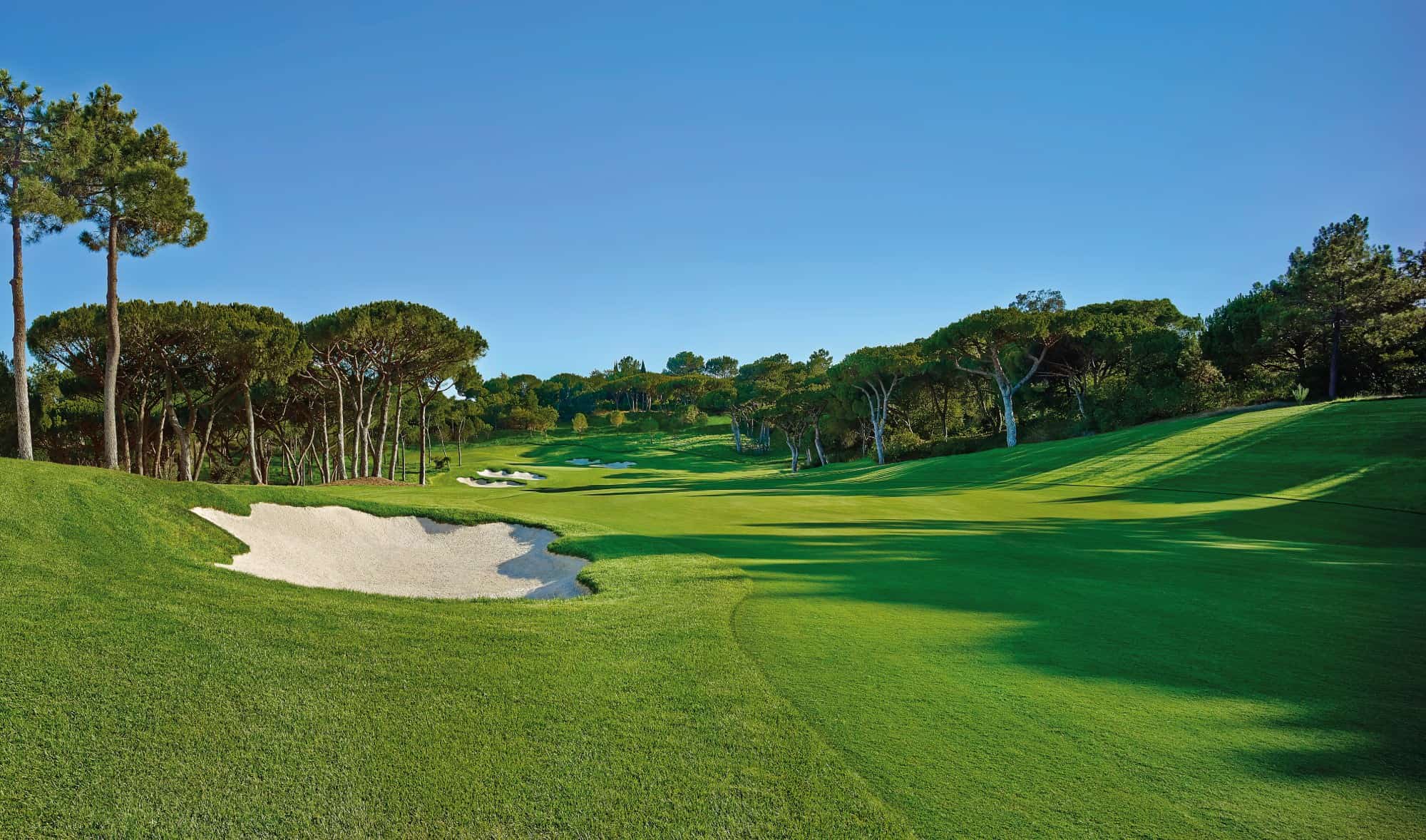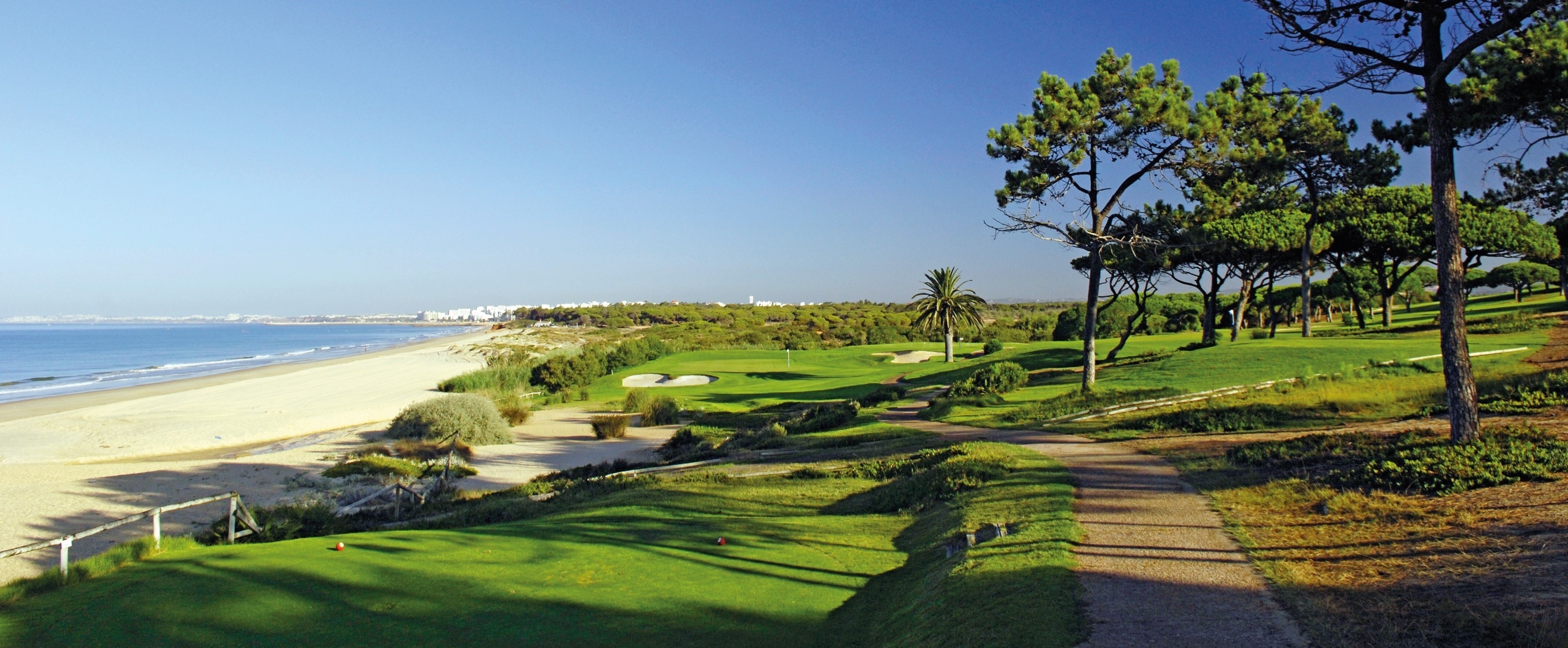
Quinta do Lago (North)
Quinta do Lago (North) | NCG Top 100s
The Irish influence in the revolution of one of the Algarve's best-known courses could barely be stronger.
The owner of the resort is Irish. The CEO who implemented the renovation is Irish. One of the designers is Irish. And the other designer has Irish ancestry and got the job because he worked on one of Ireland's legendary links.
The owner is Denis O'Brien, and his role in the overhaul was 'only' to have the nerve to sanction the multi-million euro renovation of a course that was still popular.
The CEO was John Dwyer, a Waterville man. He drove the project and put together the team that revitalised the North.
One of the designers was Paul McGinley, who needs little introduction other than to say his involvement goes back two decades.
His co-designer on the project was Beau Welling, an American who worked for Tom Fazio's firm, notably on iconic Waterville in the south-west of Ireland.
It was while he worked for four years on that GB&I top-10 course that he met Dwyer, then at Cork clifftop blockbuster Old Head.
McGinley and Welling met over a steak and a Guinness and instantly realised there was synergy with their design philosophy.
The pair became friends over Guinness, golf and fishing so when a decade after those days Dwyer was leading the North's renaissance, he knew who to turn to.
McGinley and Welling met over a steak and a Guinness and instantly realised there was synergy with their design philosophy, not least an emphasis on playability. That is now the North's calling card.
So, while the routing remains much the same as it was from the William Mitchell original, the duo's emphasis was on making it forgiving for all.
It is very friendly off the tee – the wide fairways are often shaped so slightly errant shots are bounced back into play – but challenges around the green.
This is especially true for mid-handicappers who are good enough to be either on the green yet not close to the pin or somewhere around the putting surface in regulation. They will often face tricky chips and tough long putts to maintain par.
The North is also distinctive visually, characterised by white-sand bunkers and the corridors of red-brown bark that line the fairways.
It's a fanciful comparison in some ways, but the sand, bark (instead of similar-coloured 'pine straw') and tall pines, does give the North a look of Augusta National.
It sounds like a two-year project doesn't it. In fact it was incredibly ready to open in just 10 months.
The North's £7.5m overhaul included removing all the grass on the 6,776-yard course plus 20cm of soil that was replaced with a 20cm sand cap.
All greens, tees, bunkers, irrigation, drainage systems and cart paths were also rebuilt using the latest technology, with multiple sets of tees introduced on each hole.
It sounds like a two-year project doesn't it. In fact it was incredibly ready to open in just 10 months.
The 1st sets the tone for the more playable experience here now, an inviting downhill drive to a very wide fairway but that gentle start contrasts with the tough par-3 2nd, more than 210 yards off the backs with water to the right and in front of a small, undulating green.
The strength of the North is the middle of the front nine, starting with the 5th. This hole sees a change of terrain, this sporty par-4 dogleg turning to the left as it climbs steeply to a narrow tiered green.
The next is a fine strategic hole where threading your drive between the bunkers with a draw leaves a much easier approach than those who play safe and then have to finesse a long iron between sand and overhanging trees.
The 8th might be the best short hole here but in the 14th – between sand and banks – and the 16th, played across a valley to a table-top green in an amphitheatre, it has strong company.
The par-5 7th plays over undulating open land and then at the 8th there is a gorgeous downhill par 3 to a green guarded by deep bunkers and surrounded by tall pines.
It might be the best short hole here but in the 14th – between sand and banks – and the 16th, played across a valley to a table-top green in an amphitheatre, it has strong company.
The 16th kicks off a strong finish, being followed by a stellar par 4 and finally by one of the North's best holes.
The par-5 last begins with a drive over a lake where the fairway has a bank on the right to kick anything leaking that way back into play. The green is in reach for longer hitters but for most of us it is a lay-up from the top of the hill then an approach over a valley to a small, narrow, angled target set into the hillside.
The green was previously tucked up on the hill and all you could see was the top of the flag and zero per cent of the green. It has been brought down so you can now see 85 per cent of the green.
It sums up the new ethos of the North, one that keeps it among the elite courses of Iberia. Chris Bertram
[post_list title="NCG Top 100s: Europe" posts=174292,177933,18424,18425]Address
R. Lima 27 8135-024 PortugalCourse Reviews

0.0 | 0 reviews
Nearby courses



